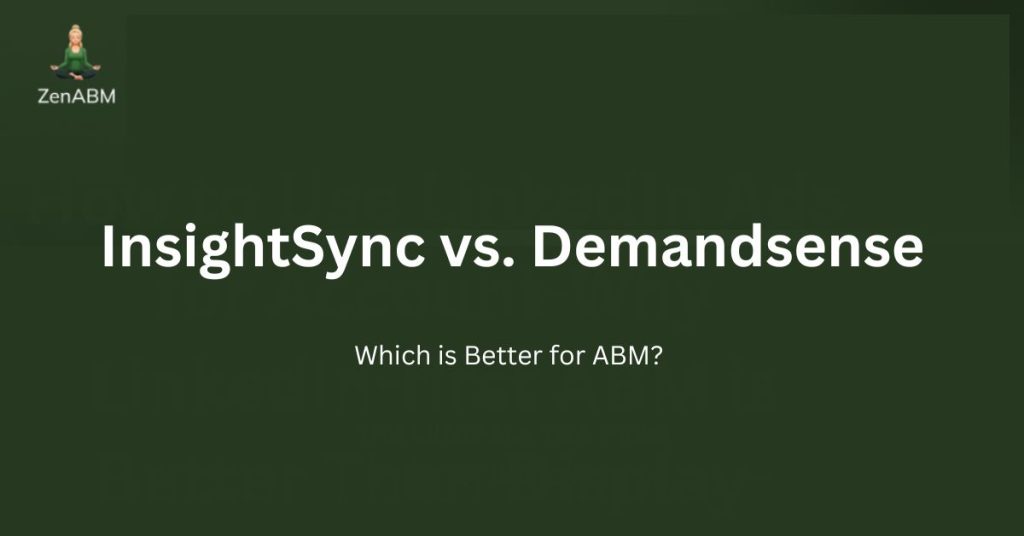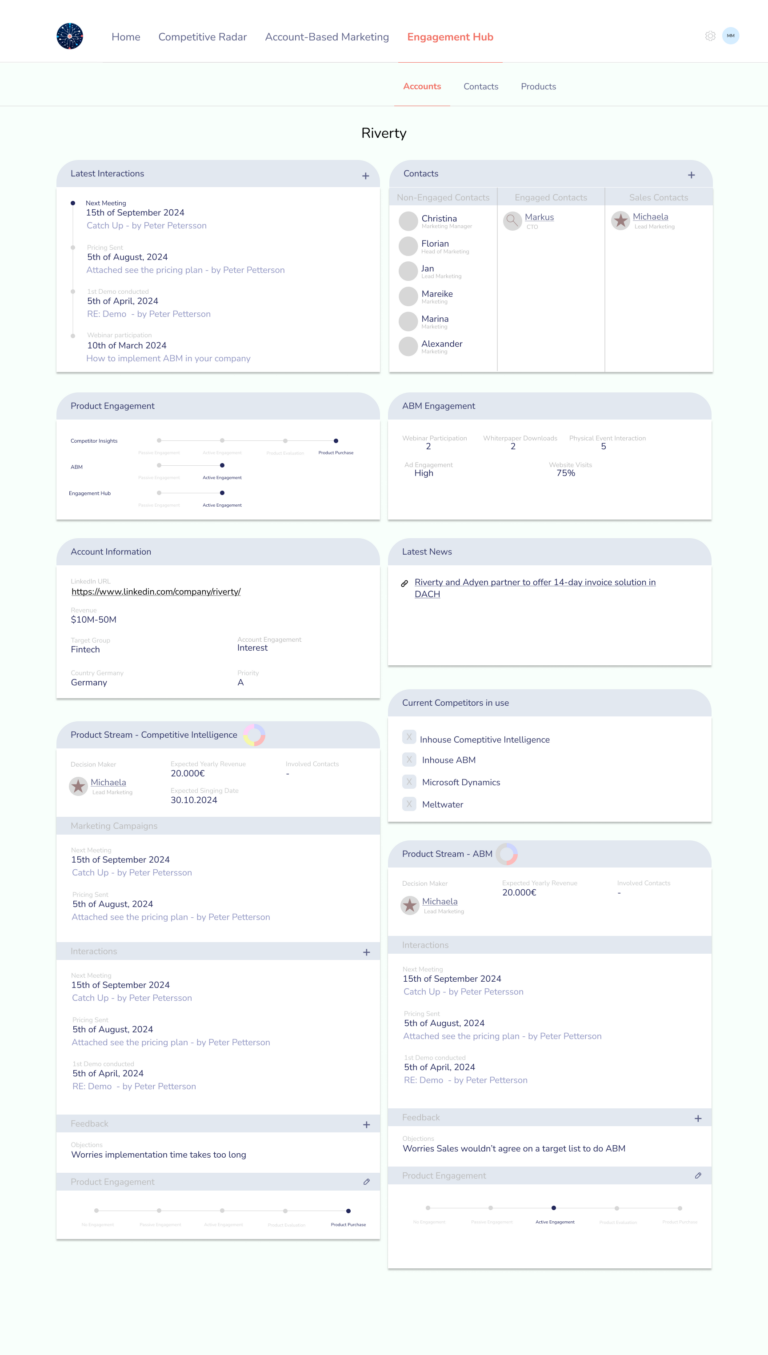In this article, I compare InsightSync and DemandSense across features, pricing, and ideal use cases so GTM teams can choose what fits their ABM programs.
I also show how ZenABM can act as a lean, lower-cost alternative or companion layer thanks to its unique LinkedIn-first, first-party approach.

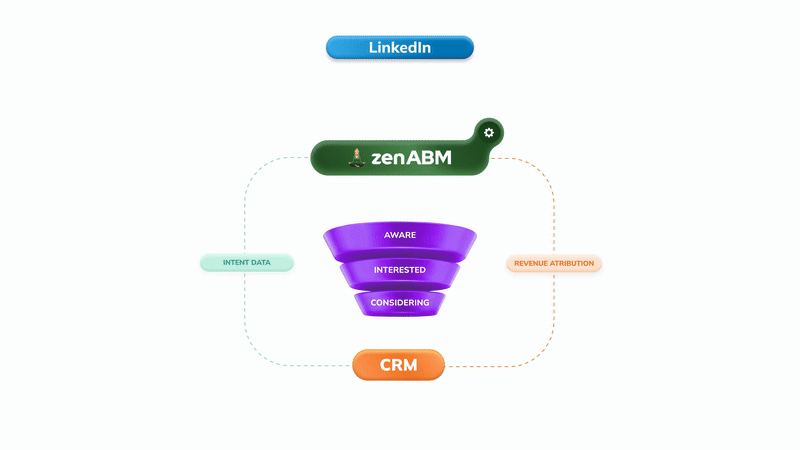
InsightSync vs. DemandSense: Quick Summary
In case you’re short on time, here’s the gist:
- InsightSync is a CI plus ABM analytics layer that centralizes target accounts, engagement timelines, and competitor intel, without running ads itself.
- Use InsightSync if your main gap is “we need one reliable view of accounts and competitors”, while execution stays in tools like LinkedIn and HubSpot.
- Pricing starts around €699 per month, so it fits teams ready to pay for a combined CI plus ABM brain rather than early-stage ABM programs.
- DemandSense is a LinkedIn-centric growth platform focused on intent signals, website visitor ID, and tighter control of LinkedIn and paid performance.
- Use DemandSense if your problem is “LinkedIn is expensive and we need smarter targeting, scheduling, frequency caps, and audience tuning.”
- DemandSense plans at $99 and $149 per month look friendly, but the Plus tier is limited by 250 credits, so costs can rise as traffic and usage grow.
- A third alternative: ZenABM gives account-level LinkedIn ad engagement, plug-and-play engagement to pipeline dashboards, account scoring, ABM stages, CRM sync, first-party qualitative intent, automated BDR assignment, custom webhooks, an AI chatbot, and job title level engagement tracking, starting at $59 per month.
InsightSync Overview: Key Features, Pricing and Reviews
InsightSync is a newer account-based marketing and competitive intelligence platform that puts target accounts, engagement data, and competitor research into one shared system.
The pitch is simple: tighter alignment across GTM teams without adding yet another media platform.
Key Features of InsightSync
InsightSync bundles three modules in one ABM platform.
1. Competitive Intelligence Hub
This is InsightSync’s main differentiator versus ABM-only tools.
The Competitive Intelligence Hub tracks competitors and market moves in one place.
Unified News Feed

InsightSync pulls competitor content from news sites, press releases, and internal or external blog posts into a single feed, so you stop juggling multiple alerts.
You can tag items by competitor or topic, react to important updates, share them with colleagues, and set alerts for specific tags or keywords, for example, when a rival announces an acquisition.
Competitor Radar & Profiling

The CI Hub lets you maintain structured profiles for each competitor, including customer logos, partners, alliances, pricing notes, and positioning, so the whole team uses the same picture.
AI Document Search
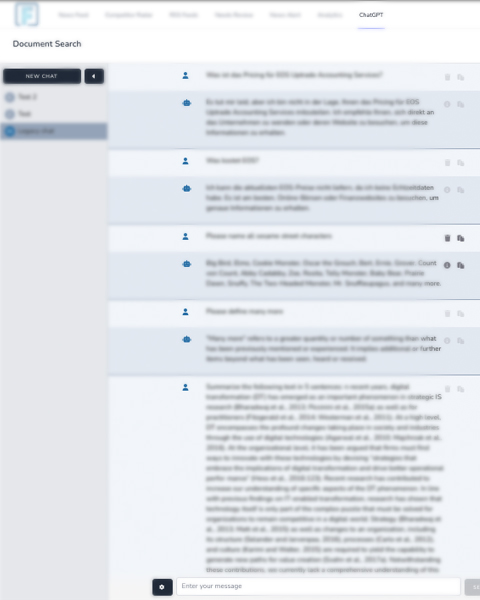
InsightSync ingests PDFs, whitepapers, and internal decks and lets you query them with AI search or pull concise summaries and key points.
2. Account-Based Marketing Hub in InsightSync
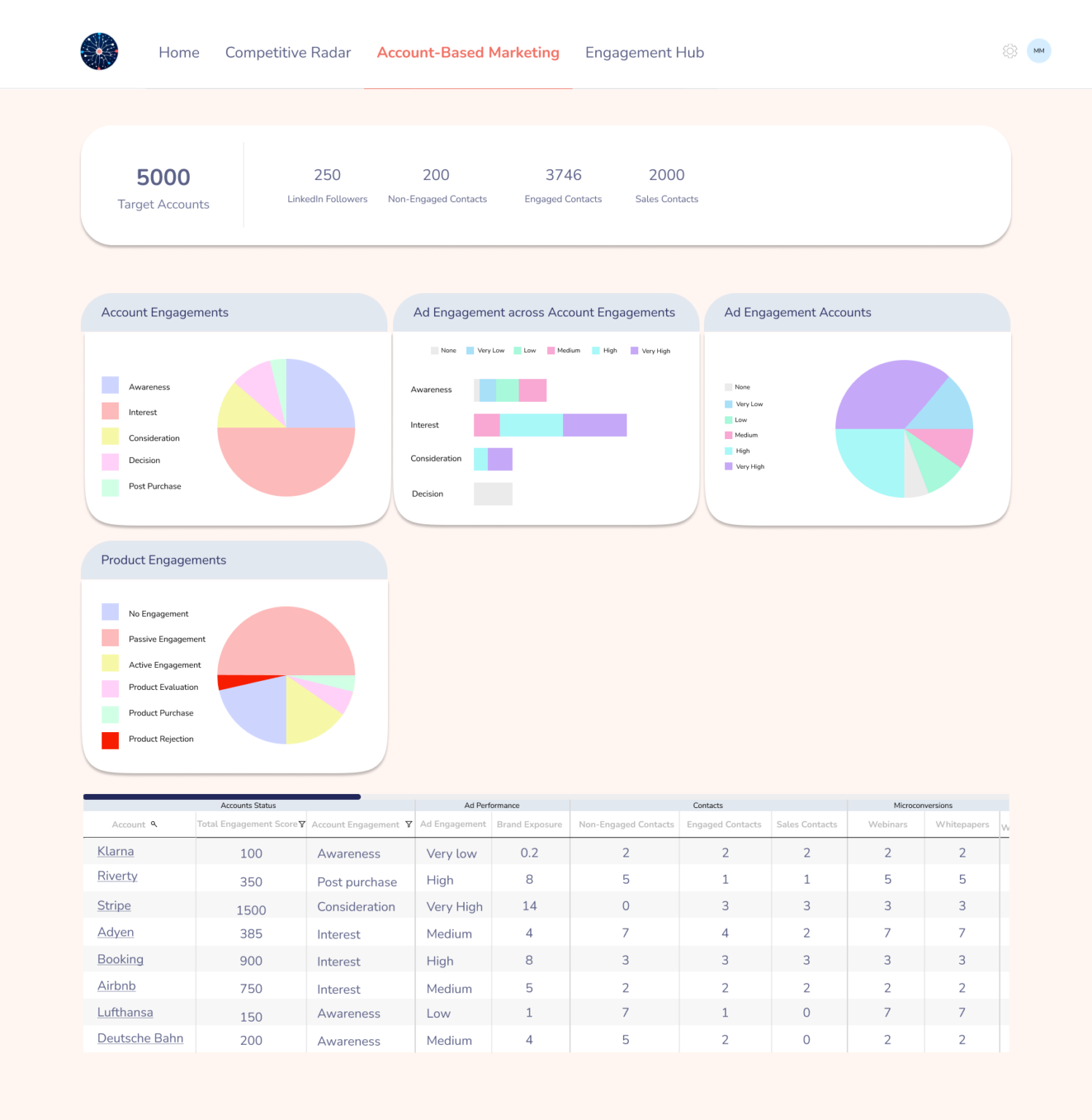
The ABM Hub focuses on three questions:
- Who are we targeting?
- What do we know about them?
- How are we engaging them right now?
It is the home for your account-based marketing workflows.
Target Account List Management
You can import or build your target account list from your CRM or CSV files.
Each account becomes a record that you enrich over time with firmographics such as industry, size, and tech stack from other tools or manual input.
Multi-channel Engagement Tracking
Once your TAL is in place, InsightSync tracks engagement from ads, email, and meetings in one timeline.
You can score actions, so demo requests carry more weight than casual newsletter opens, and high-scoring accounts surface as more sales-ready.
Real-Time Alerts & Optimization
InsightSync flags accounts that heat up or cool down so teams can double down where momentum is growing and step in when important accounts go quiet.
Account-level visibility also supports budget shifts toward active accounts and messaging tweaks for segments that lag.
Scalability & Workflow Automation
InsightSync is positioned to grow with your ABM maturity. It references automated workflows for personalized outreach, although public details are still limited.
Important context: InsightSync’s ABM Hub is channel agnostic and analytics-focused. It is not an ad network or full marketing automation platform like Demandbase or RollWorks. You still run campaigns in LinkedIn, HubSpot, and other tools while InsightSync ingests data for attribution and analysis.
For LinkedIn heavy teams, ZenABM offers a more direct path via the official LinkedIn Ads API.
It pulls company level impressions, clicks, engagement, and spend, scores accounts, syncs this data into the CRM as company properties, and routes hot accounts to BDRs automatically.




ZenABM then connects ad-engaged accounts with CRM deals and provides revenue and attribution dashboards so you can measure LinkedIn ABM impact on pipeline and closed revenue.

3. Engagement Hub
InsightSync’s Engagement Hub consolidates account activity such as web visits, ad clicks, email opens, and event attendance across contacts.
It highlights trends like rising interest or sudden silence so teams can focus on active accounts and re-engage those going quiet.
At the contact level, you can see who viewed pricing, who registered but skipped webinars, and who stays engaged, which helps sales tune outreach and marketers refine content.

These patterns help you map buyer roles and intent, infer funnel stage, and trigger timely follow-ups.
The Engagement Hub does not execute campaigns. Its job is to keep marketing and sales aligned around a shared view of account engagement and behavior.
InsightSync Pricing: How Much Does It Cost?
InsightSync sits in the premium bracket and targets teams that want a combined ABM plus CI backbone.
Here is the pricing as of late 2025:

- Self Service – €699/month: All three hubs with unlimited users. You handle setup and connect data manually or via the HubSpot integration, currently the only native CRM. Includes a 30-day free trial.
- Pro – €899/month (+ €3,500 one-time setup fee): Adds white glove onboarding. InsightSync’s team connects data, configures alerts and dashboards, and runs a one-off competitor and partner research project, plus quarterly reviews. The monthly step up from Self Service is modest, but the one-time service fee is sizeable.
- Custom – Contact for pricing: For teams on Salesforce, Microsoft Dynamics, Zoho, or Pipedrive. InsightSync is still building these integrations and offers early access. Custom plans add bespoke CRM work, technical consulting, prioritized features, and priority support.
InsightSync is cheaper than the biggest ABM suites, but still an upper mid-market spend. It works when you treat it as CI system, ABM analytics layer, and light CRM adjunct in one.
Earlier stage or lean teams may still find the roughly €8K per year starting point heavy.
By contrast, ZenABM starts at about $59 per month for its starter plan, a small fraction of that.
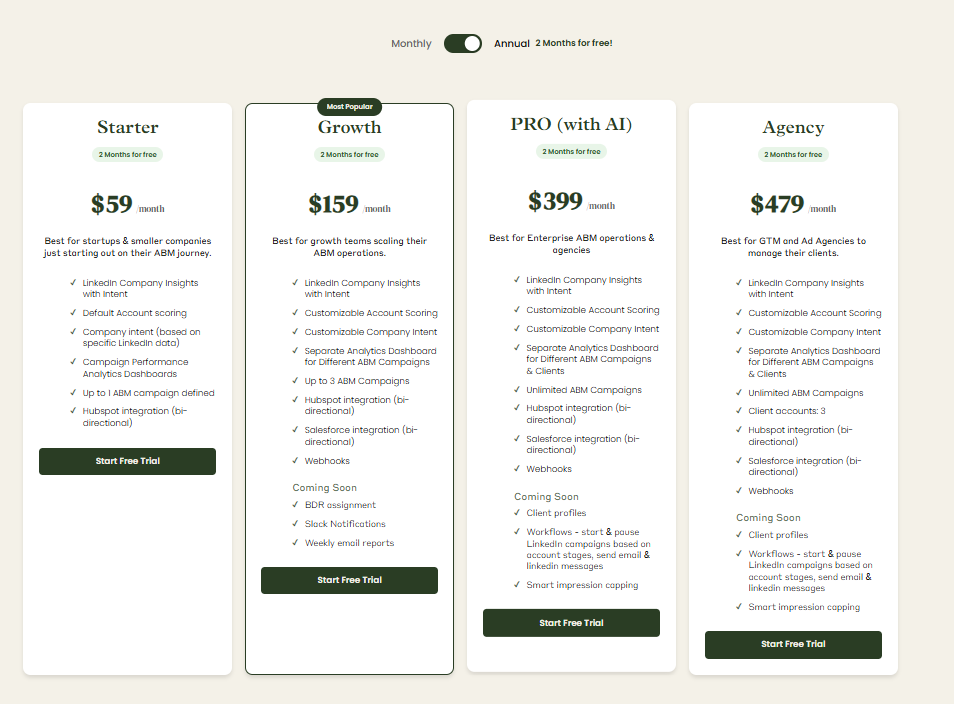
User Impressions and Reviews
Public feedback on InsightSync is still limited, but a few patterns show up:
- Origin story – built by practitioners: InsightSync began as an internal tool from a B2B marketing lead at Riverty before spinning out. ZenABM has a similar origin: Michael Jackowski built it for Emilia Korczynska at Userpilot to fix LinkedIn ABM reporting, then turned it into a dedicated LinkedIn ABM SaaS. Customers like Productive and Spear Growth report strong results with ZenABM.
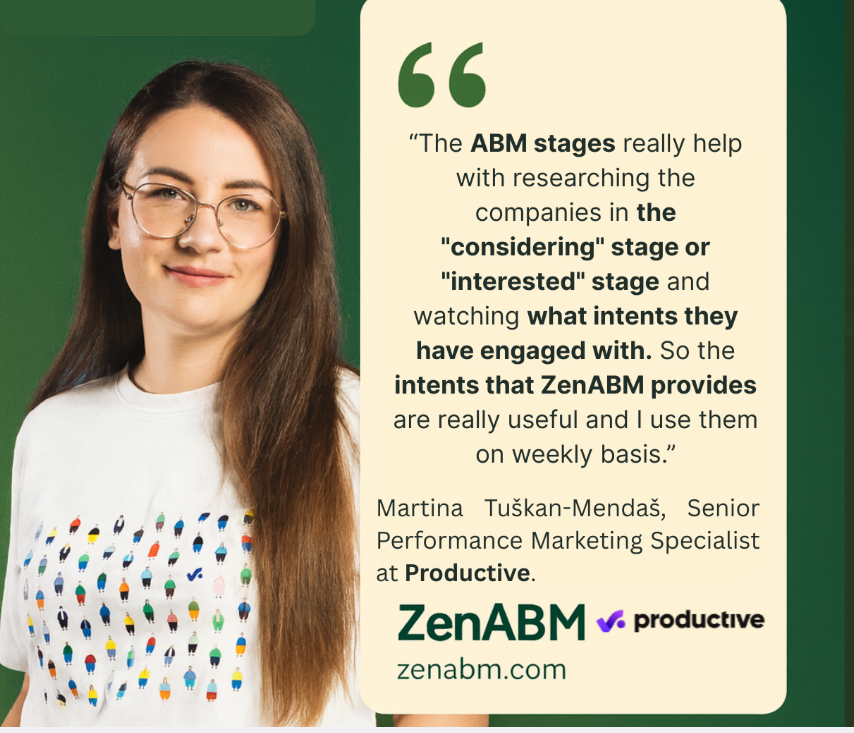
- Website testimonial: A testimonial from “John Doe, Riverty” says InsightSync has aligned marketing and sales and that the CI Hub alone saves hours each week.
- No G2 or TrustRadius footprint yet: As of November 2025, InsightSync does not have listings or reviews on G2 or TrustRadius.
DemandSense Overview: Key Features, Pricing, and Reviews
DemandSense presents itself as a LinkedIn-centric account-based marketing and demand gen platform for B2B marketers and agencies.
It combines LinkedIn ad optimization, intent data, and prospecting so you can unmask visitors, capture buying intent, and adjust budgets, schedules, and targeting.
Key Features of DemandSense
DemandSense blends several capabilities into one growth platform.
Intent Signal Ingestion
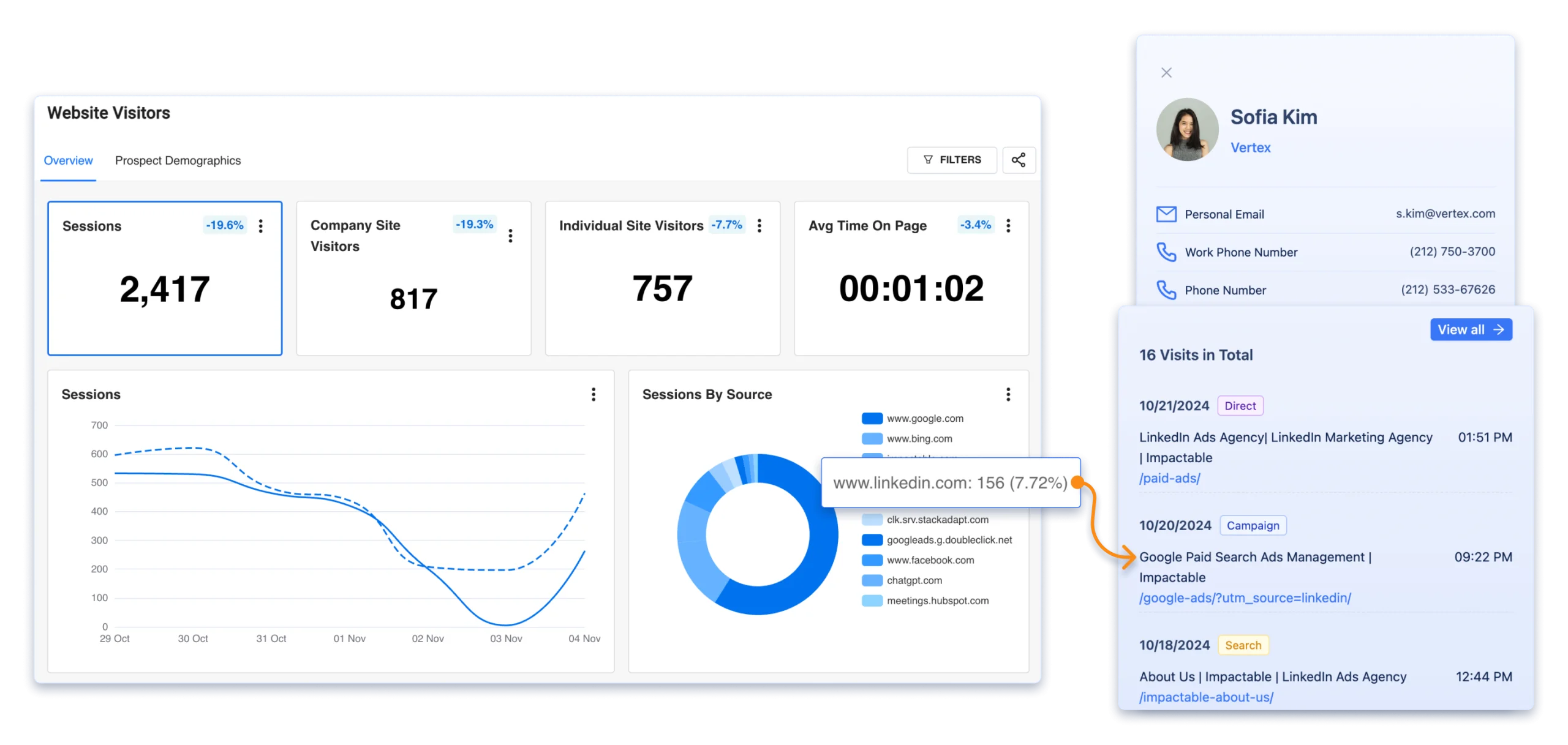
DemandSense aims to unmask anonymous website visitors and identify companies showing buying interest.
Its Visitor ID or IntentID uses LinkedIn data and site tracking scripts to match ad clicks and visits back to firms, then pushes that data into audiences and your CRM.
A G2 user says they can see which companies visit before forms are filled and use that as a clear engagement signal.
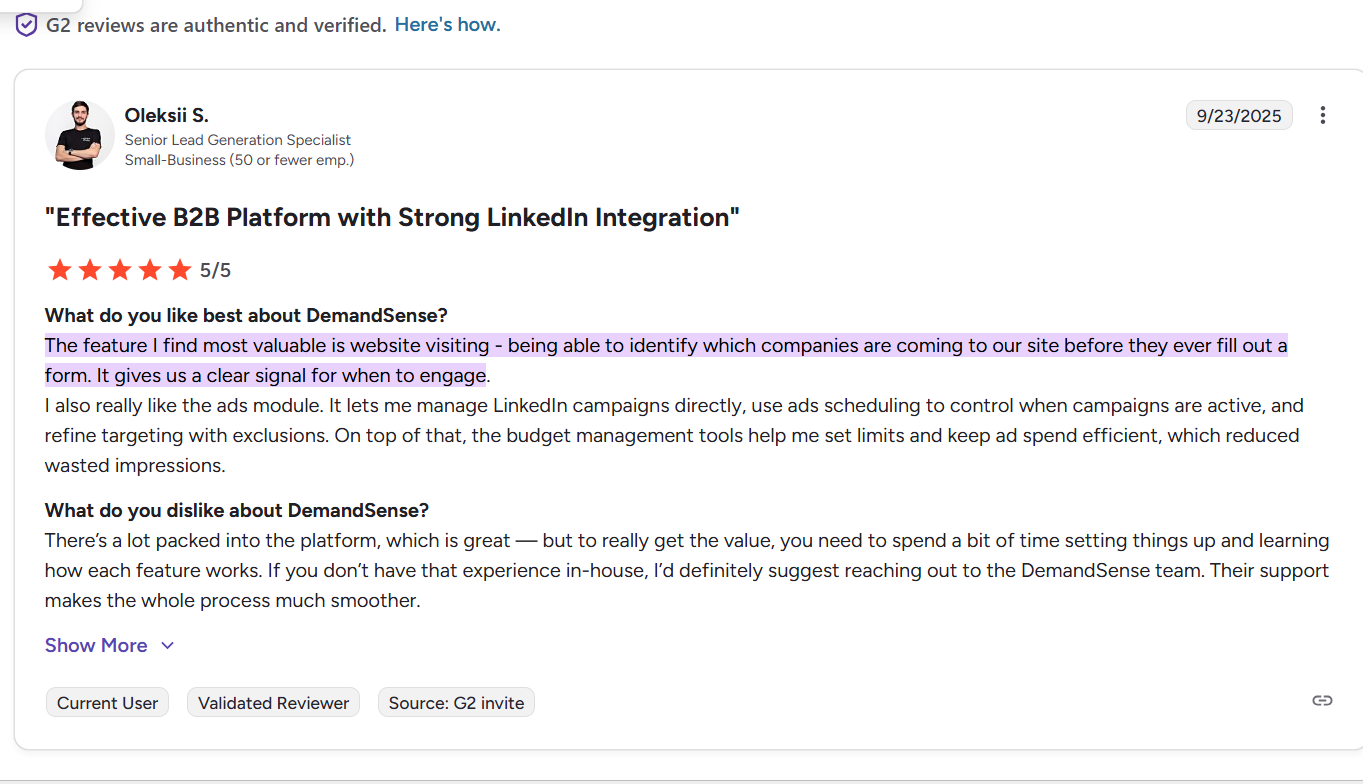
Note: Website visitor deanonymization still leans on IP matching and cookies, which are fragile. Remote work, private networks, unregistered IPs, and aging databases hurt accuracy. Cookies are also being phased out. A Syft study puts IP-based identification at about 42 percent accuracy.

Account-Level Audience Building & Segmentation
Once signals are in, you can group accounts by intent and engagement and build firmographic or behavioral audiences.
DemandSense supports custom lists for LinkedIn retargeting (and other channels), lets you exclude weak segments, and caps impressions per account so large accounts do not get spammed.
LinkedIn-Centric Campaign Management
DemandSense sits on top of Campaign Manager to provide stronger ad controls without heavy complexity.
It auto-tunes LinkedIn campaigns with features like:
- Advanced scheduling: Hourly performance analysis with automatic pauses during low engagement hours.
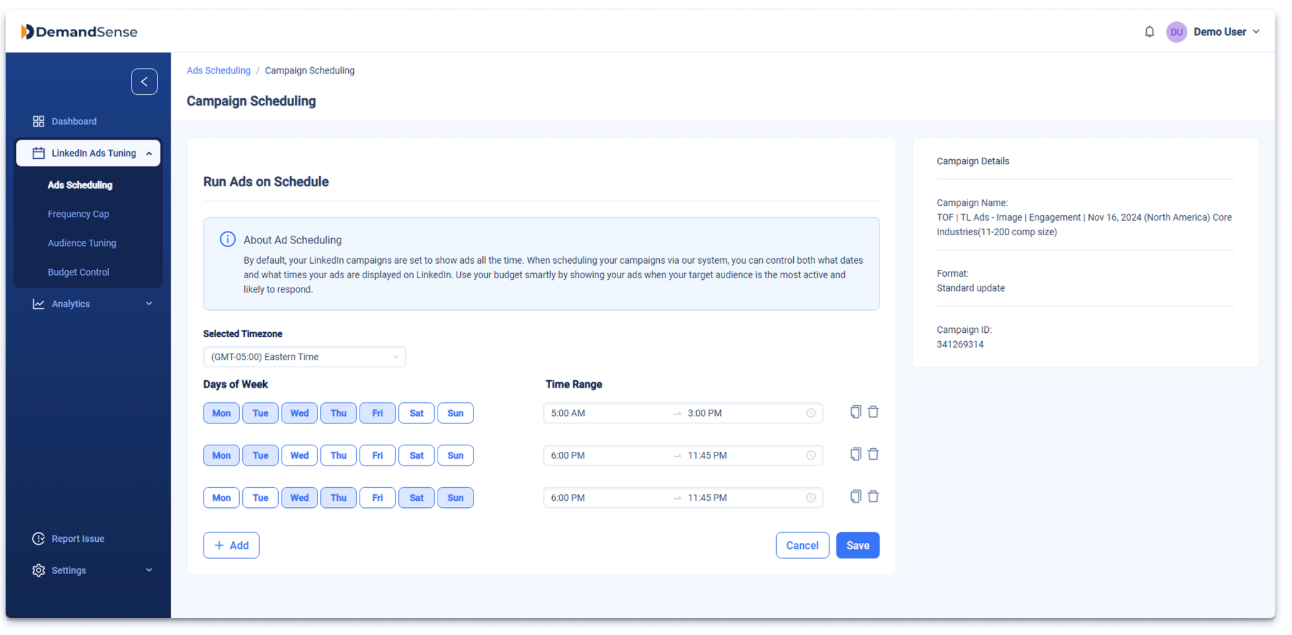
LinkedIn ad campaign scheduling in DemandSense - Smart budgeting: Budget caps and thresholds at the account or campaign level, with spend shifted into high-performing segments and alerts when caps are hit.
- Frequency capping: Per company view or click caps to limit fatigue.
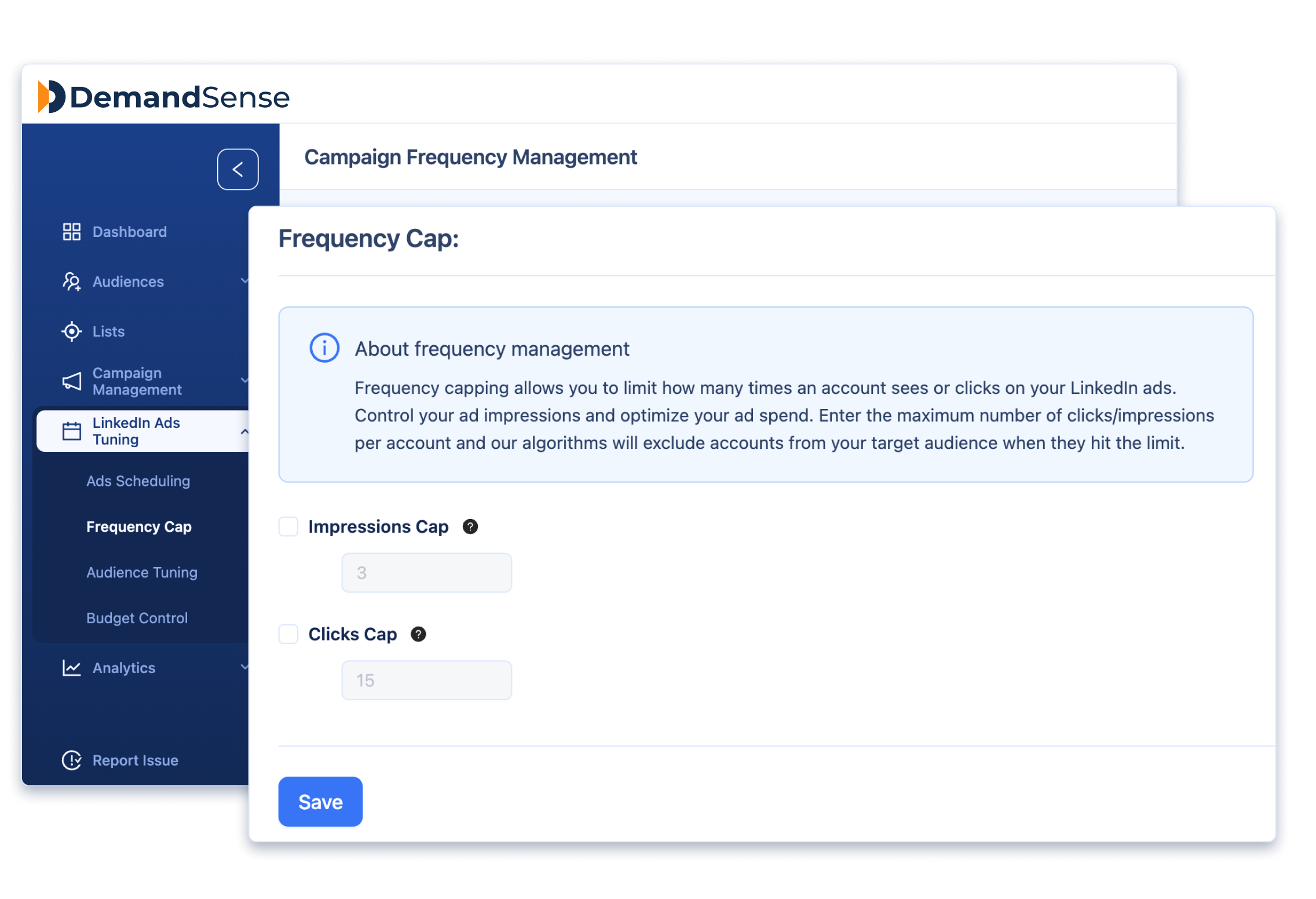
Frequency capping in DemandSense - Audience tuning: Beyond LinkedIn’s native breakdowns, DemandSense shows which industries, departments, or accounts convert and lets you exclude underperformers or scale winners with one click.

Audience tuning in DemandSense
Multi-Channel Activation
LinkedIn remains the core channel, but DemandSense can extend to Facebook and display or CTV networks by reusing the same account lists as custom audiences.
The idea is a connected journey: someone clicks a LinkedIn ad, visits your site, and later sees a follow-up elsewhere, all tracked inside DemandSense.
CRM/Data Integration & Engagement Insights

DemandSense is not only about ads. It tries to tie everything back to revenue.
It pushes engagement into your CRM and syncs with HubSpot and Salesforce so company records show LinkedIn impressions, clicks, and scores.
This gives sales signals such as “Acme viewed your pricing page after a LinkedIn click” and lets you attribute ad spend to the pipeline.
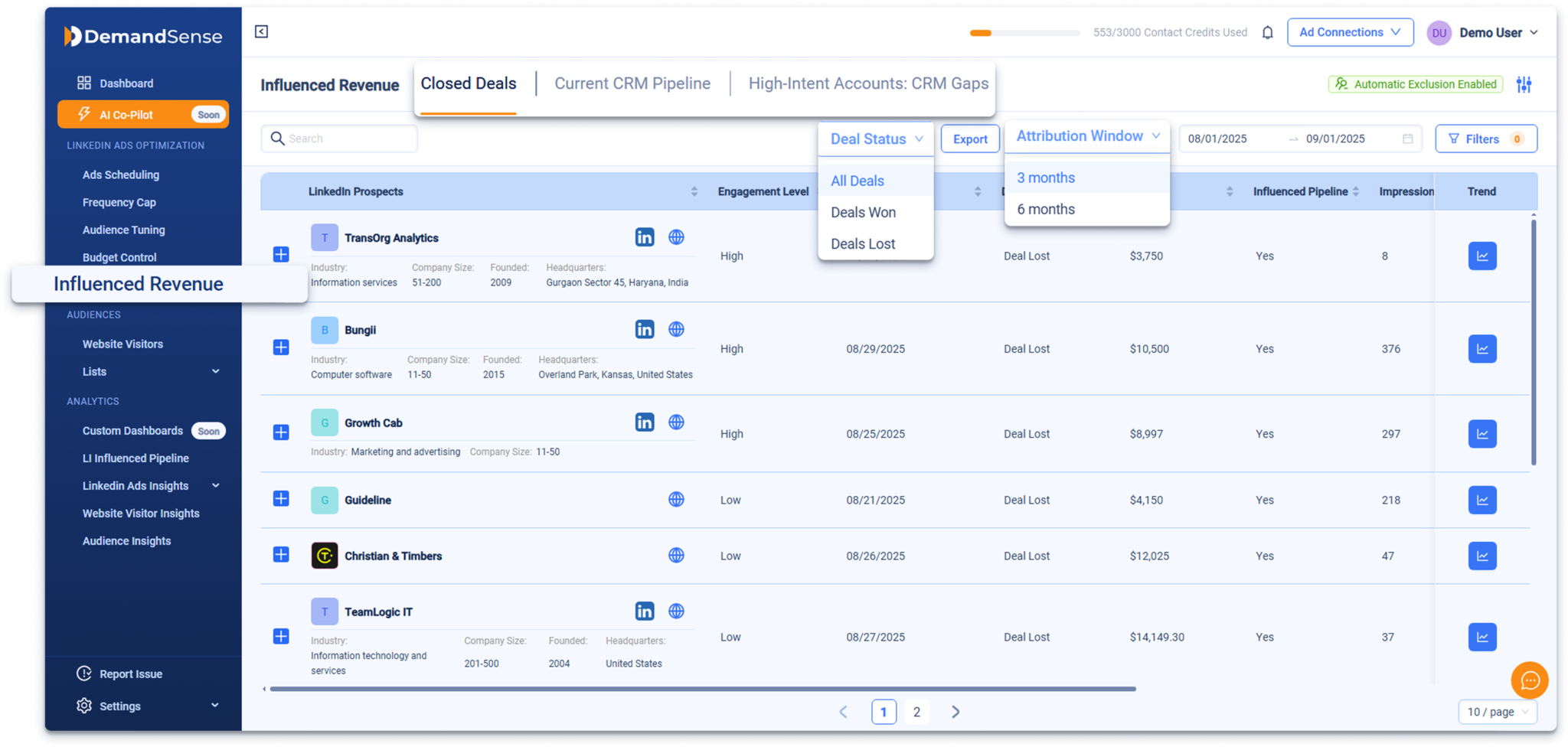
ZenABM likewise pushes account scores and engagement into CRM company records as properties, starting at $59 per month.

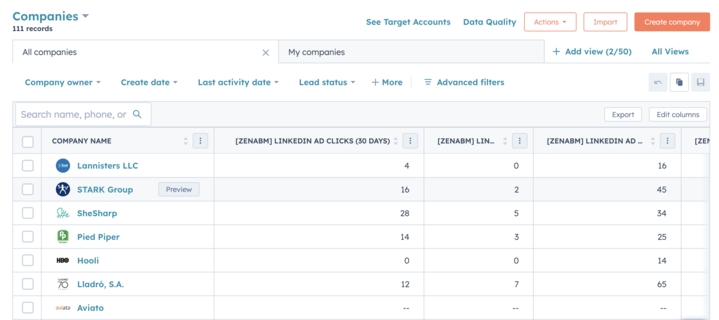


Hourly Reporting
DemandSense breaks down ad engagement, spend, and performance by hour:

DemandSense Pricing: How Much Does It Cost?
DemandSense pricing reflects how deeply you want intent baked into LinkedIn and cross-channel GTM.
The Basic plan at $99 per month gives marketers and sales a self-serve entry.
It includes audience tuning so users can see which companies interact with LinkedIn ads, plus ad scheduling, frequency capping, and richer reporting.
For companies that want intent data flowing directly from their website into sales, DemandSense Plus starts at $149 per month.
It adds everything in Basic plus 250 monthly data credits to identify anonymous website visitors or uncover leads from target accounts and unlocks the Website Visitor ID module.
Together, the tiers position DemandSense as an accessible LinkedIn intent tool with room to scale, provided you are comfortable with the credit model.
DemandSense vs. ZenABM: Pricing Comparison + Free Website Visitor Reveal Hack
The $99 and $149 plans look attractive until you notice the Plus tier’s 250 credit cap. Any decent traffic or outbound research can burn through that fast, and overages are where the real costs sit, turning a friendly sticker price into a classic intent data upsell.
ZenABM often comes out smarter, starting at about $59 per month for Starter, with the highest agency tier (unlimited, no credits) still under $6K per year.
You get what you actually need for LinkedIn ABM: account-level engagement tracking, account scoring, ABM stage tracking, automatic routing of hot accounts to BDRs, bi-directional CRM sync, custom webhooks, qualitative buyer intent, job title level engagement, and plug-and-play ROI dashboards.
ZenABM also gives you unlimited website visitor identification if you retarget site visitors with cheap LinkedIn text ads and read back which companies were served impressions.
You get deanonymization and awareness in one go.

User Impressions and Reviews
Public reviews for DemandSense are still sparse.
On G2, DemandSense currently has a single 5-star review from an agency user.
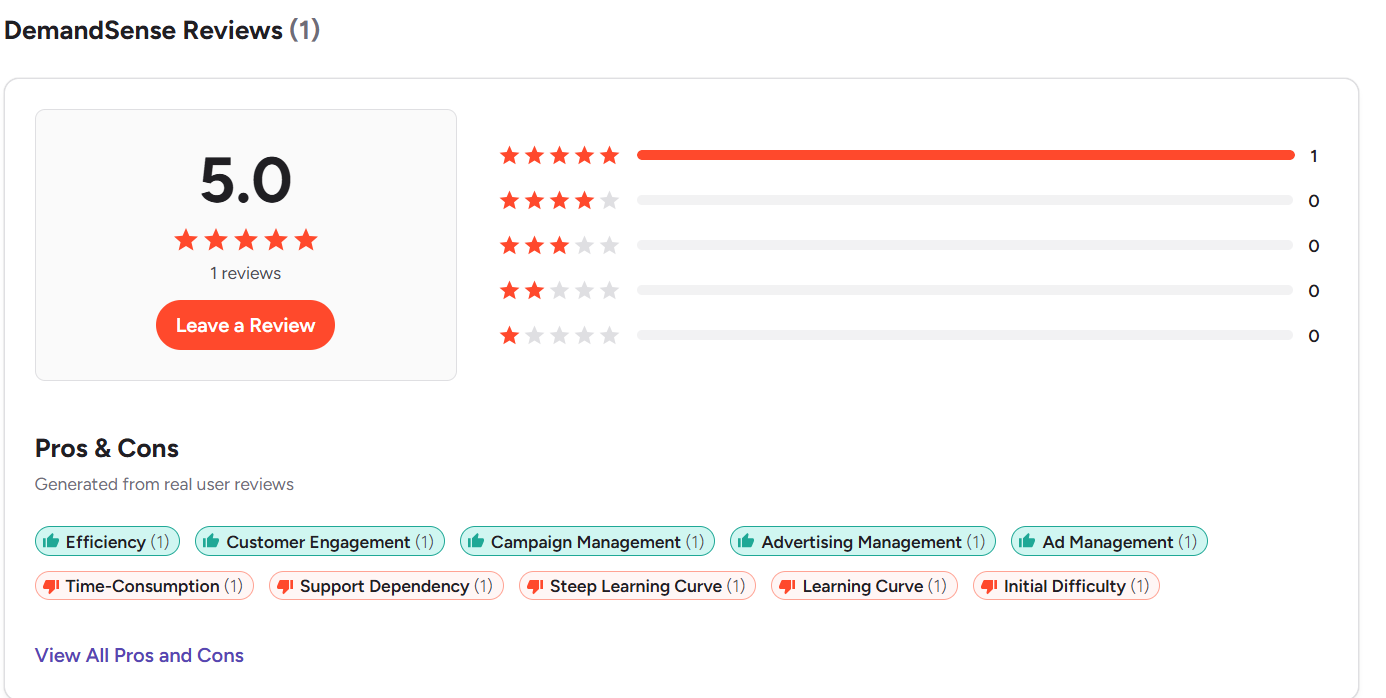

The reviewer praises the LinkedIn integration and ROI but warns that “there is a lot in the platform” and that you need time and possibly vendor help to set it up well.
InsightSync vs. DemandSense: Key Differences
Here is a direct comparison of InsightSync and DemandSense across core dimensions.
| Feature category | InsightSync | DemandSense |
|---|---|---|
| Core positioning | Competitive intelligence plus an ABM analytics layer that centralizes accounts, engagement, and CI data | LinkedIn-centric growth platform that combines intent signals, visitor ID, and ad optimization |
| Primary focus | Clarity and alignment around who to target and how they engage | Improving LinkedIn and paid performance with stronger targeting, scheduling, and frequency control |
| Main modules | Competitive Intelligence Hub, ABM Hub, Engagement Hub | Intent signal ingestion, account audiences, LinkedIn controls, visitor ID, CRM sync |
| Ad execution | No native ad execution, reads data from channels like LinkedIn and MAPs | Optimizes and orchestrates LinkedIn campaigns, with extensions to Facebook and programmatic |
| Intent model | Mainly first party engagement data from your stack, no native keyword surge feeds | Website visitor identification and LinkedIn interaction data based on IP and cookie style matching |
| Visitor deanonymization | Not a core feature, focused on accounts already in your TAL and CRM | Website Visitor ID and IntentID modules that reveal companies and contacts visiting your site |
| Engagement view | Account and contact timelines across ads, email, meetings, and events | Hourly and account level reporting on ad engagement, spend, and performance |
| Pricing model | Premium euro pricing from about €699 to €899 per month plus setup and custom tiers | Lower entry pricing at $99 and $149 per month but constrained by monthly credits |
| Cost dynamics | Fixed upper mid market platform cost by tier | Appears affordable at first but can rise quickly as traffic and credit usage grow |
| Ideal team profile | B2B teams that want shared CI and ABM analytics and already have execution tools | Teams that spend heavily on LinkedIn and want better control, visitor ID, and tighter budgets |
| Review footprint | Very limited public reviews, no G2 or TrustRadius presence yet | Early stage footprint with a small number of public reviews so far |
| Best use case | Align GTM teams on who to target, how they are engaging, and what competitors are doing | Refine LinkedIn targeting, cap frequency, and turn site intent into audiences and sales signals |
| Where ZenABM fits | Acts as LinkedIn first companion when you want company-level ad engagement and first-party intent | Lean alternative when you want LinkedIn ABM, CRM sync, and revenue attribution without credit limits |
InsightSync vs. DemandSense: So, Which Is Better for ABM?
InsightSync fits teams that want a single place to combine CI, target accounts, and engagement so marketing and sales can align on which companies to pursue and why.
You keep running campaigns in your existing tools while InsightSync acts as the analytical layer.
DemandSense fits teams that already know their target accounts and care most about squeezing more performance from LinkedIn and connected paid channels.
It puts intent signals, visitor ID, audience tuning, scheduling, frequency caps, and budget optimization at the center, with the tradeoff of IP-based deanonymization and a credit-based pricing model.
If your main pain is “we cannot see accounts and competitors clearly,” InsightSync is the closer match.
If the pain is “LinkedIn is expensive and we need tighter control over who sees what and when,” and you are comfortable with visitor ID data, DemandSense is the better fit.
ZenABM as a LinkedIn-First, First-Party Lean ABM Alternative
There is also a third option: ZenABM.
ZenABM is built for teams that rely on LinkedIn as the primary ABM channel and want first-party accuracy, automation, and revenue visibility without the price or complexity of multi-channel suites.
Account-Level LinkedIn Engagement Tracking


ZenABM connects to the official LinkedIn Ads API and captures account-level data for all campaigns so you can see which companies see, click, and engage with your ads.
Because this is first-party data from LinkedIn’s environment, it is more reliable than IP or cookie-based visitor ID.
A Syft study puts IP-based identification at around 42 percent accuracy.

ZenABM treats LinkedIn ad engagement itself as first-party intent. When several people in one company keep engaging with your ads, that is a strong buying signal without rented intent feeds.
Real-Time Engagement Scoring + Full Touchpoint Timeline

ZenABM updates engagement scores as accounts interact with your ads across campaigns, so you can see who is heating up over short or long windows and let marketing and sales prioritize accounts that show real intent.
ZenABM also shows the full touchpoint timeline for each company:

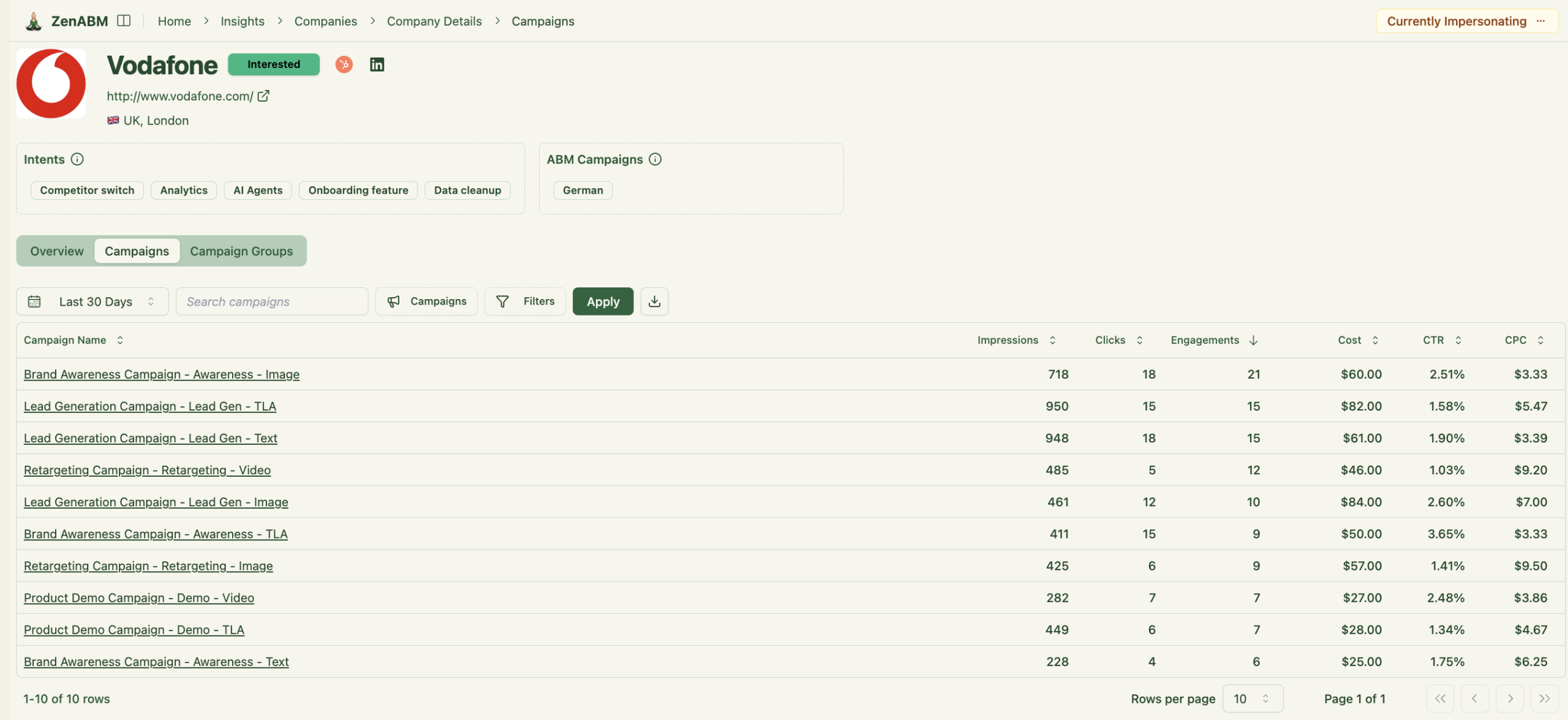
ABM Stage Tracking

ZenABM lets you define stages such as Identified, Aware, Engaged, Interested, and Opportunity and automatically places accounts in the right stage using scores and CRM data.
You control thresholds, and ZenABM tracks movement over time.
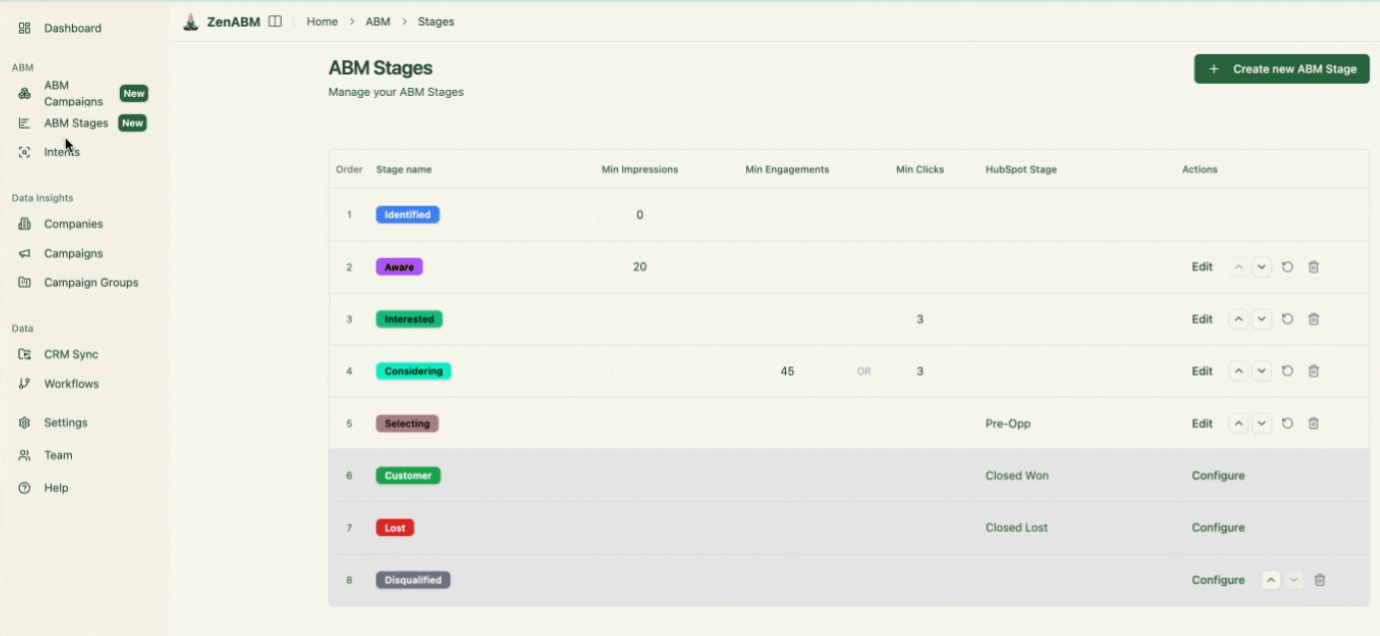

This gives you funnel visibility similar to larger suites, but powered by LinkedIn data.
CRM Integration and Workflows
ZenABM integrates bi-directionally with CRMs like HubSpot and adds Salesforce sync on higher tiers.
LinkedIn engagement data flows into the CRM as company-level properties:

Once an account crosses your score threshold, ZenABM updates the stage to Interested and automatically assigns a BDR.

Intent Tagging from Ad Engagement
ZenABM lets you derive intent topics from LinkedIn campaigns by tagging campaigns by feature, use case, or offer.
ZenABM then shows which accounts engage with which themes.
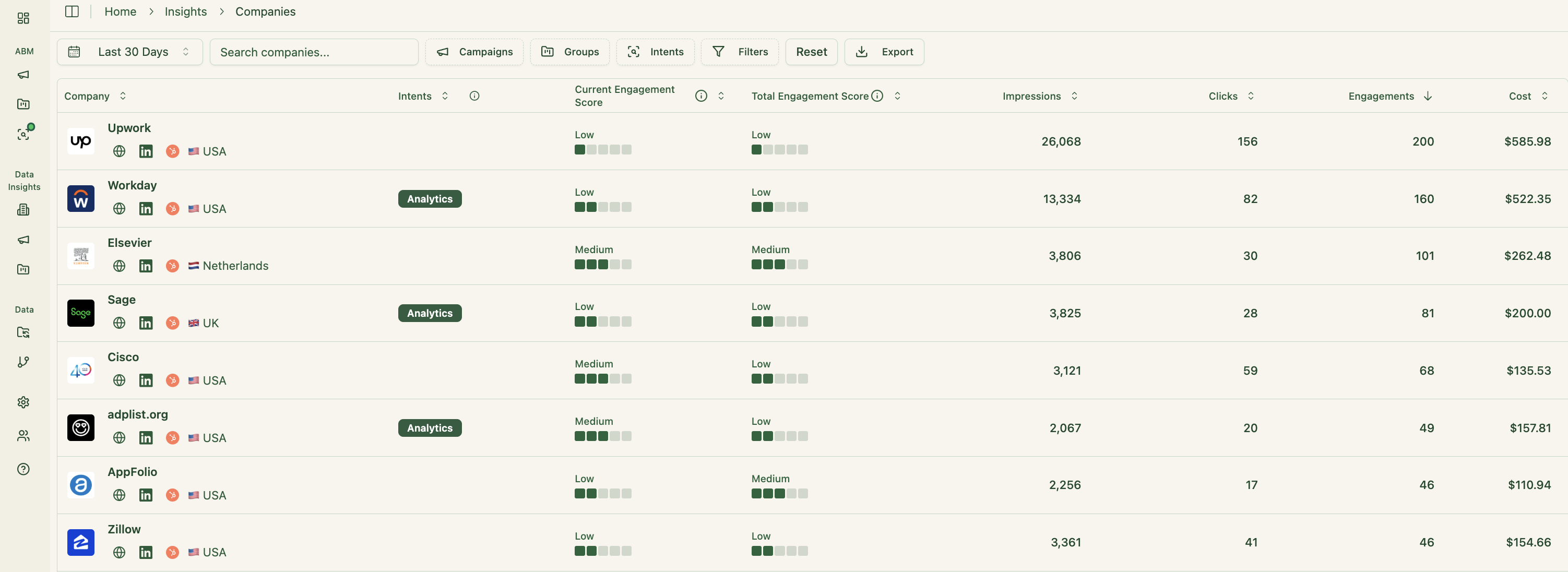
This is clean, first-party intent from owned interactions.
You can push these topics into your CRM so sales and marketing can tailor outreach to what each company has actually explored.
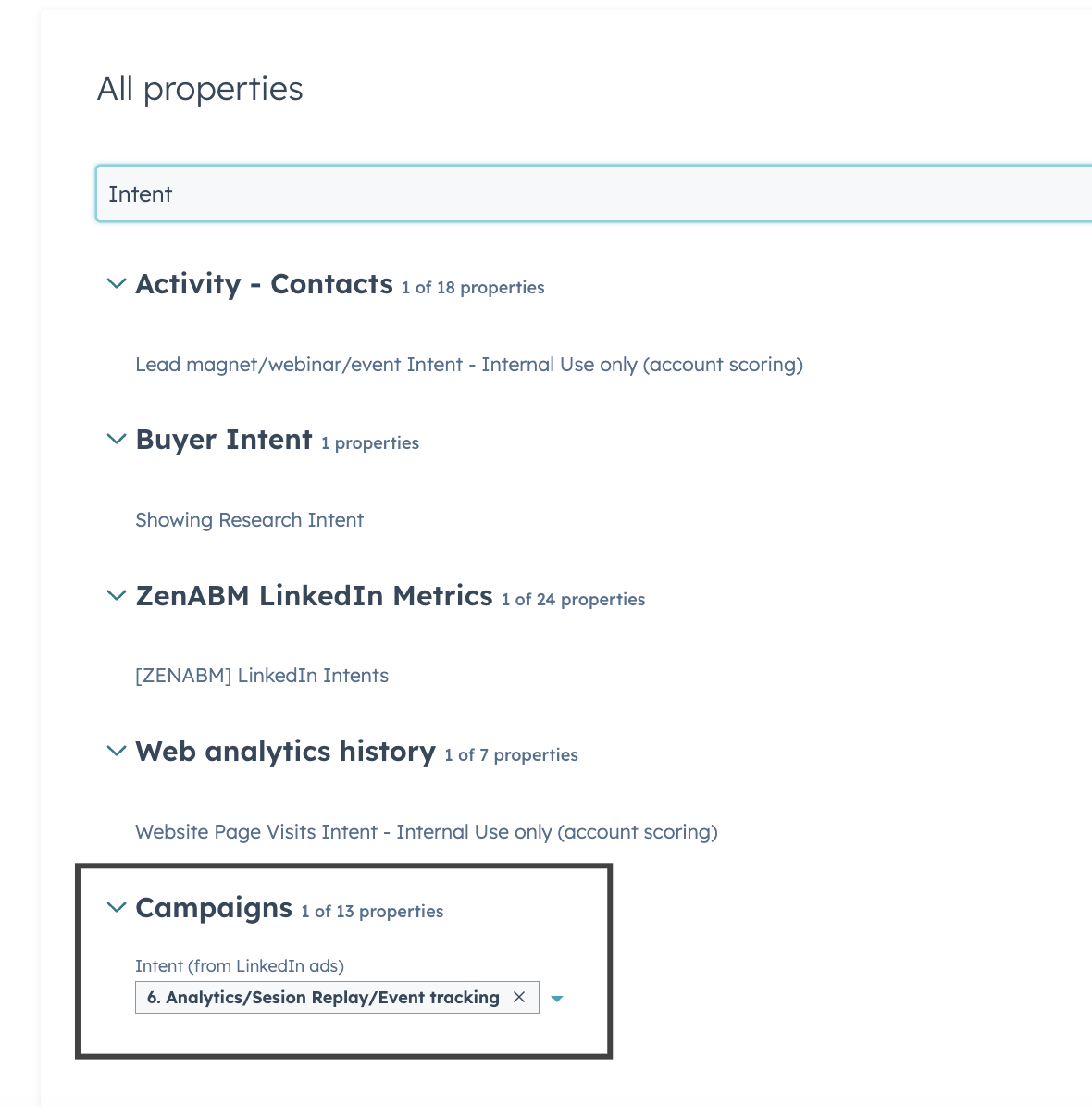
Built-in Dashboards and ABM Analytics
ZenABM ships with dashboards that connect LinkedIn ads to account engagement, stage movement, and revenue.
- You can monitor performance from high-level ABM campaigns down to LinkedIn campaign groups and individual ads:
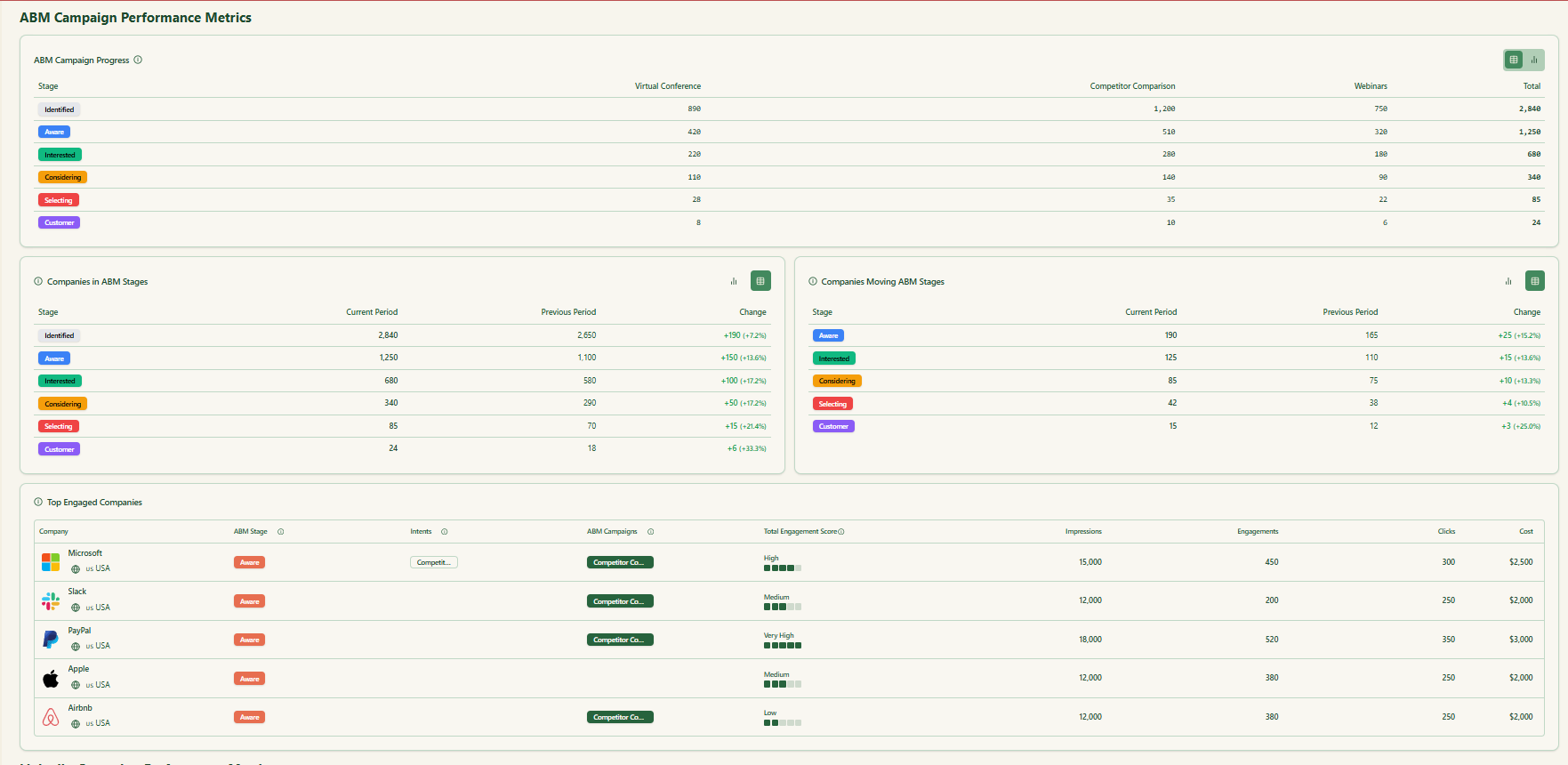

- Because ZenABM stores deal value and ad spend per company and per campaign, it can calculate ROAS, pipeline per dollar, and other revenue metrics and show pipeline contribution.

Custom Webhooks
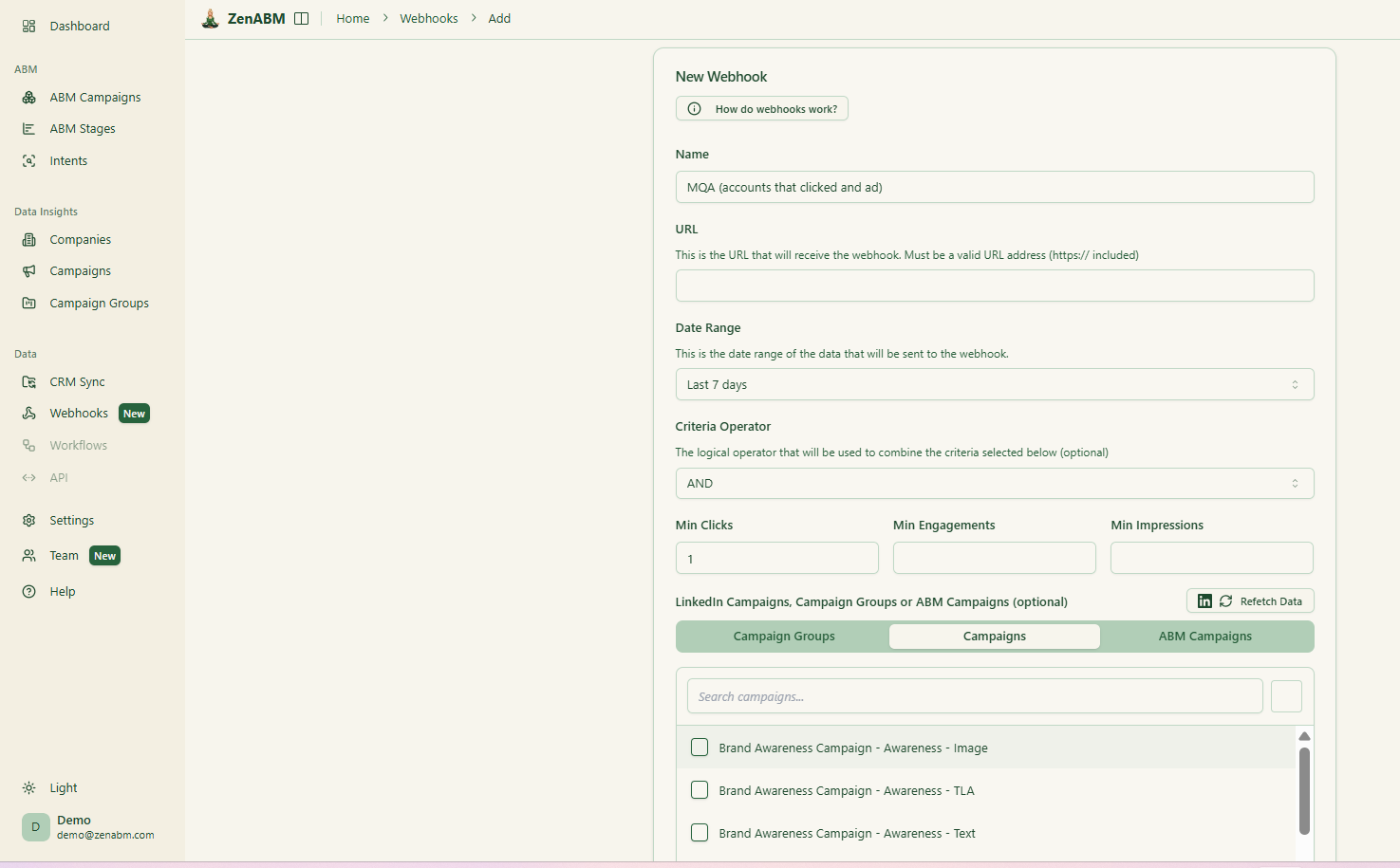
ZenABM’s custom webhooks let you push events into your stack, for example Slack alerts, enrichment flows, or other ops automations.
Job-Title Analytics
ZenABM shows which job titles engage with your creatives and gives dwell time and video funnel analytics.
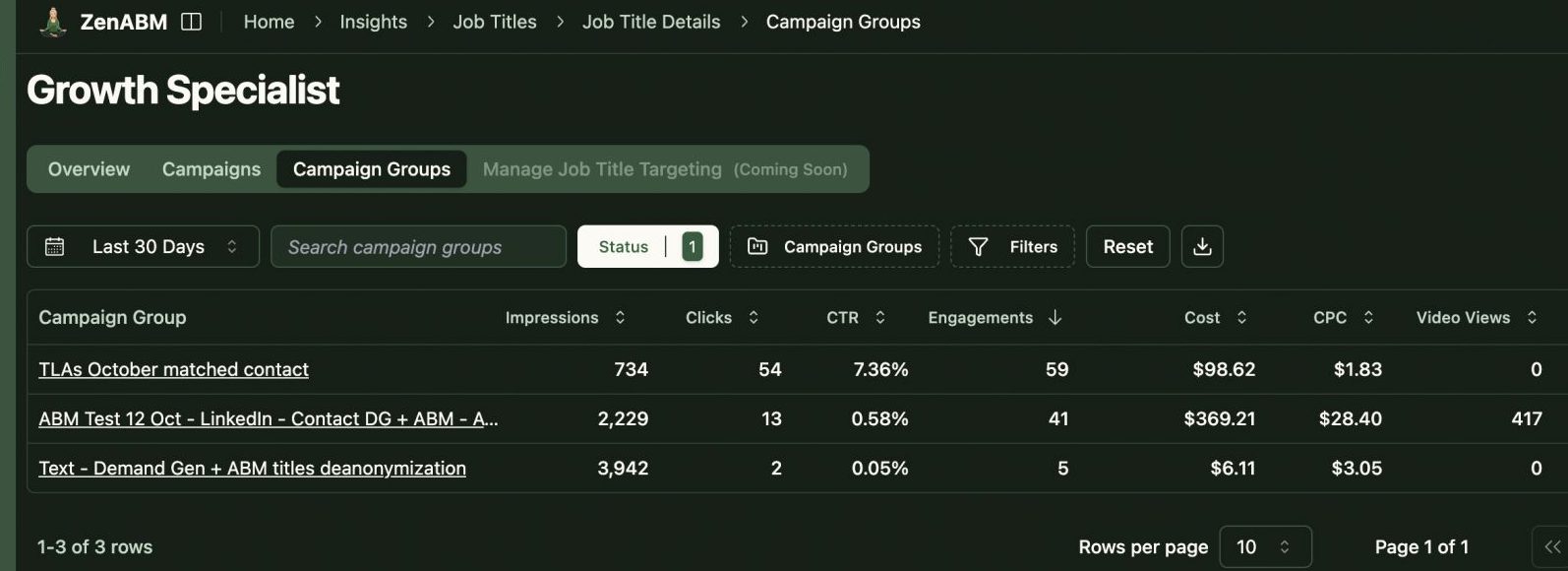
ABM Campaign Objects for True Multi-Campaign Attribution
Most tools treat each LinkedIn campaign separately. ZenABM lets you group several into one ABM campaign object so you can see performance across regions, personas, or creative clusters.
Instead of juggling fragmented reports in Campaign Manager, you see spend, pipeline, account movement, and ROAS for the entire initiative.
AI Chatbot to Analyze Your LinkedIn and ABM Data
ZenABM includes an AI chatbot on top of your LinkedIn API data and ABM model.
You can ask questions such as “Which accounts moved from Interested to Selecting last month?” or “What is my pipeline per dollar on retargeting?” and get answers based on live data.
Multi Client Workspace for Agencies
For agencies, ZenABM offers a multi-client workspace.
You can manage multiple ad accounts and clients in one environment, each with its own ABM strategy, dashboards, and reporting, instead of constantly switching accounts in Campaign Manager.
ZenABM Pricing

Plans start at $59 per month for Starter, $159 for Growth, $399 for Pro (with AI), and $479 for Agency.
The agency plan still stays under $6,000 per year.
All tiers include core LinkedIn ABM features. Higher tiers mostly increase limits and add Salesforce sync.
Plans are available monthly or annually, and every plan includes a 37-day free trial.
Conclusion
InsightSync is for teams that want one place to combine CI, target accounts, and engagement so marketing and sales can agree on which companies to prioritize and why, while keeping execution in existing tools.
DemandSense is for teams already investing in LinkedIn who want to push those budgets harder with visitor ID, account-based audiences, scheduling, and frequency caps, accepting IP-based identification and a credit model in exchange.
If clarity and cross-team alignment are your main goals, InsightSync is the more natural fit.
If your main constraint is getting more performance from LinkedIn and related media without huge extra tooling, DemandSense aligns better.
If your ABM motion is LinkedIn-heavy and you care more about first-party accuracy, pipeline per dollar, and CRM centered workflows than visitor ID gimmicks, ZenABM gives you company-level LinkedIn engagement, qualitative intent, ABM stages, CRM sync, and revenue attribution at a fraction of most ABM or intent suites.
Try ZenABM now for free (37-day free trial) or book a demo to know more!

